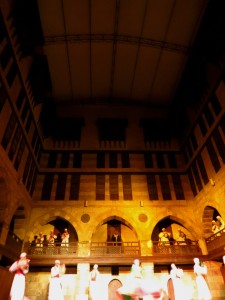
(Photo by: Thoraia Abou Bakr)
As summer tips its hat at us, the scorching heat will drive many of us out of Cairo in search of a beach breeze. But when you cannot spare a couple of days leave the city, Cairo can still provide a lot of fun as well. Here are a few activities to ensure you maximum fun in the sun, even when urban-bound.
Tannoura at Wekalet Al-Ghoury
Located in the middle of Al Azhar, Wekalet Al-Ghoury is one of the historic places worth visiting when you are in Cairo. The building, which was originally an inn where travellers and merchants would stay and recover from their journeys, retains its original architecture from 1504CE when it was built under the auspices of Sultan Al-Ghoury, considered the last Mamluk sultan of the Burji Dynasty. It is known for its spacious inner courtyard, which is looked down upon by most rooms in the upper level.
During the day the place is opened for visitors, and you can walk through the old rooms and take in the exquisite architecture. Then every Saturday, Monday and Wednesday at 8pm, the Tannoura Dance Company takes centre stage in the spacious courtyard. Audiences are treated to wonderful Sufi chanting, and of course the famous whirling dervishes with their colourful robes. It is one of the quintessential Cairene experiences.
Bird-watching at Al-Azhar Park
Developed in 2005, Al-Azhar Park might be the biggest green expanse inside of Cairo, stretching for about 30 hectares. The park’s varied terrain makes for some beautiful sites; walking up the tallest hill in the park, a visitor is treated to breathtaking, panoramic views of Old Cairo and the Citadel. For this alone the park is very much worth visiting, and trekking up and down the hills make for a fun bit of exercise.
While many activities take place at the park at night – especially with Al-Genaina Theatre, in the early mornings the park is quite abandoned, which allows the birds free reign. Apart from the regular hawks, sparrows and pigeons that are found all over the city, the park is known for the occasional appearance of green birds believed to be Rose-ringed Parakeets, the only type of parrot in Egypt. Sometimes, if you are lucky, you can see a whole flock of Parakeets flying from one tree to the next.
Make sure you wear comfortable shoes, have a bottle of water and pack the best camera you can find.
Feluca
Unfortunately the option of swimming in the Nile is not available in Cairo, but the next best thing is taking a feluca and treading the waters of the Cairene River. It is best done right before sunset, so that you can enjoy the views of the city as the sun slowly sets over the capital’s skyline.
This might be the perfect time of year for this activity since the late afternoons are still cool enough to enjoy being outside, and the nights still have a little chill to them. Make sure you wear non-slippery shoes and bring a cardigan in case you get chilly.
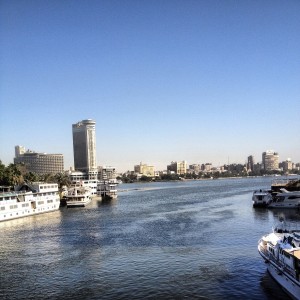
(Photo By: Thoraia Abou Bakr)
Rowing on the Nile
For the more adventurous types, who are not afraid of getting a little wet, rowing is an exhilarating option. Most rowing clubs have a rigorous program of exercise and jogging before the actual rowing takes place. It is crucial to warm the body up enough to avoid getting muscle cramps.
The experience is well worth the physical effort and waking up early. Most rowing takes place very early in the morning, sometimes before sunrise, but that depends on the club. It is best done before noon to avoid the heat of the glaring sun. In addition, waking up early means that you see a completely different Cairo that is more serene and inviting, and nothing beats the feeling of euphoria you get when you are in the middle of the Nile, looking out over the city.
Crossing bridges
It may not be common knowledge, but we have several scenic bridges in Cairo, which are also pedestrian-friendly. Each bridge crosses the Nile at a location that provides a unique view of the city. Two of these bridges are the Qasr Al-Nil Bridge which connects Downtown with Zamalek, and the Al-Galaa Bridge which connects Giza with Gezira. In fact, both bridges are on the same line and can easily be crossed in the same day.
It is advisable to go on this walk in the early morning or right before sunset, so that the sun is not too strong. The walk is around two kilometres from the Al-Galaa Bridge to the end of the Qasr Al-Nil Bridge. As you cross the Al-Galaa Bridge, you are treated to the more open branch of the Nile and the Cairo Opera House. As you cross the Qasr Al-Nil Bridge, you can see the famous Garden City Corniche and even the 6th of October Bridge.
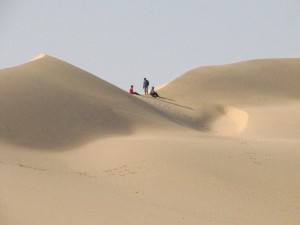
(Photo by: Thoraia Abou Bakr)
Sandboarding
Right outside of Cairo, in the road to Fayoum, you will find the famous Kataneya Dunes, a spot known for sandboarding. The activity is not for the faint of heart since it requires scaling sandy hills and then sliding from the top using a piece of wood. That being said, it is an immensely fun activity, offering a real adrenaline rush.
If you are a bit of a show-off, you can stand on your sandboard as it slides down the hill, but if you are a more cautious person, then you might settle for sitting on it while it slides. Your legs might get a bit sore from trekking up the hill every time, but after the first slide down, you will be hooked. Most people will complete six or seven trips up the hill during the trip.
As the sun sets, the organisers usually make a bonfire and cook up a barbecue. The rest of the evening is spent eating, dancing and listening to music, or just talking by the fire.
Eating street food
A Cairene experience will never be complete without sampling the delicious street food that the city offers. Granted, it may not be the safest, digestively-speaking, but it can be well worth the pain.
One of the well-known spots is Zezo, located outside Bab Al-Fotouh in Islamic Cairo, which serves oriental sausage sandwiches. Apart from that, you can sample the spicier option with red sauce, which is known as Sogo’ Eskandarany. Afterwards, you should end the meal with one of Zezo’s special dessert sandwiches called Sakalance. The sandwich is a melange of sweet tehina, honey and keshta, a very rich type of cream.
Another hotspot is El Brince in Imbaba, which is known for its liver sandwiches. The place is fancier than Zezo, with its own printed menu, and even a slogan: “El Brince, taste with history”. It also serves an array of tajines, like molokheya, potatoes with meat, and grits (fereek) with meat. For the more daring, the place also serves fattet kaware’e, which is rice with different parts of the cow’s feet.
Warning: this activity is not for the faint of stomach!
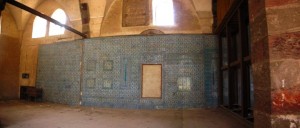
(Photo by: Thoraia Abou Bakr)
Discover Cairo’s Blue Mosque and Amir Taz Palace
Many know about the Blue Mosque in Turkey, but very little information is available on the one in Cairo, which is also known as the Aqsunqur Mosque. The mosque is tucked away in a small street near the Amir Taz palace in the Darb Ahmar neighbourhood. The tiny street that houses the mosque – barely wide enough for a single car – is called Bab El-Wazir, named after one of the old gates of Cairo nearby, which was opened by Najm al-Dīn Muhammad in 1341CE.
The place is very serene and inviting, and you can still see the remaining blue tiles for which the mosque is named. It was built in 1347CE under the sponsorship of Prince Shams ad-Din Aqsunqur, and it was restored during the Ottoman era in 1652CE, under the supervision of Prince Ibrahim Agha al-Mustahfizan. Modern renovation work started in 2009 by the Agha Khan foundation.
The most stunning aspect of the interior decor is the mihrab, which is adorned with light blue tiles for which the Ottoman style is known, but still retains the architecture patterns of the Mamluk era.
The Aqsunqur Mosque is close to the Amir Taz Palace, which is another landmark of the Mamluk era. Built in 1352CE by Prince Seif-Eddin Taz Ketghaj, the palace extends over an area of 8,000 square metres, and is known for the musical concerts that take place there. They also conduct auditions every season for singers who would like to sing there.
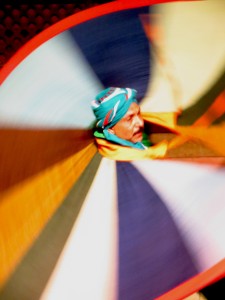
(Photo by: Thoraia Abou Bakr)
Coffee hunting in Al-Azhar
Al-Azhar is one the best places to go for a stroll while taking in the surrounding monuments, with the historic neighbourhoods of Haret El-Yahoud and El-Mousky all within walking distance. While it is easy to get lost exploring the landmarks and architecture of these tiny streets, they are just as enticing for their many great coffee shops, which sell beans, grounds and the like. There are many shops along the street that offer imported and coffee from all corners of the earth, with different spice blends, roasts and combinations. It is always advisable to tell the salesperson how you are going to drink your coffee (Turkish, press pot, etc.) so that he may recommend the best blend.




